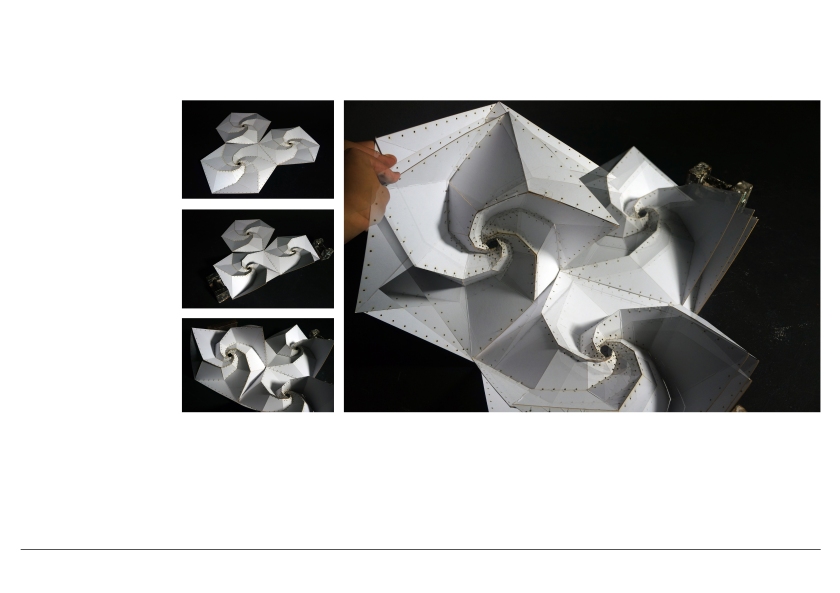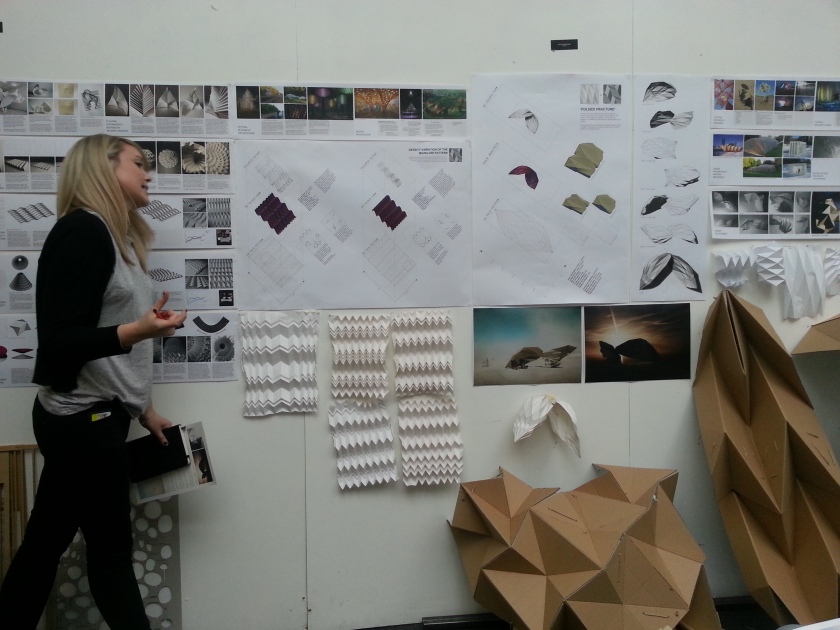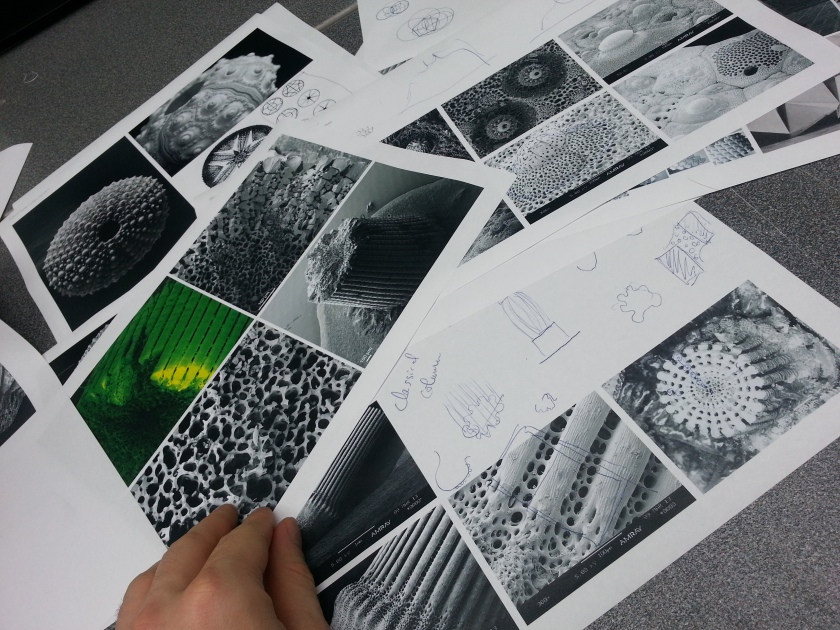My initial studies stemmed from researching into Stellation. This, in simple terms, is the process of extending polygon in two dimensions, polyhedron in three dimensions, or, in general, a polytope in n dimensions, to form a new figure. Through researching the application of this process, I came across the sculptures created by George Hart, as he has experimented with stellated geometries to which are subdivided to create mathematical interweaving structures.
My Research into the method and calculations of George Hart’s Mathematical Sculpture’s focused on the sculpture ‘Frabjous’. Through rigorous testing and model making I have understood the rules behind the complex form. This is based on the form of a stellated icosahedron, whose shape is contained within a dodecahedron.
Lines are drawn from one point, to a point mirrored at one edge of the face of the dodecahedron form – as shown in the diagram. This creates intersecting lines at each face as you can see from the diagrams below. Each dividing line has two intersection points, with symmetry at the center of the line. The sculpture aims to avoid the intersections of these lines by introducing a sine curve with the domain 0 to 2*pi. As you can see, each component is exactly the same – for this model, 30 components are used.
`To simplify the construction of the sculpture, I extracted a build-able section which uses ten components in total. Two of these sections are then weaved together and joined up by a further ten single components to form the entire sculpture.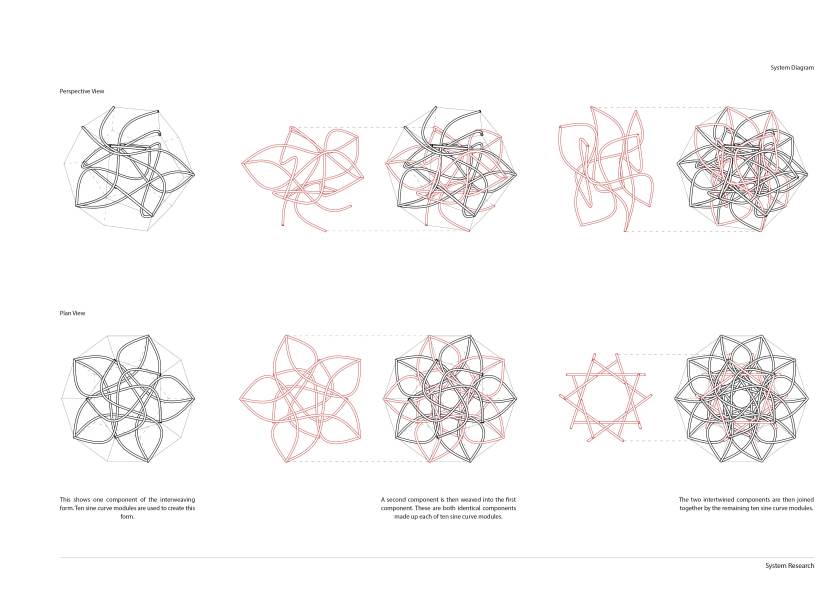

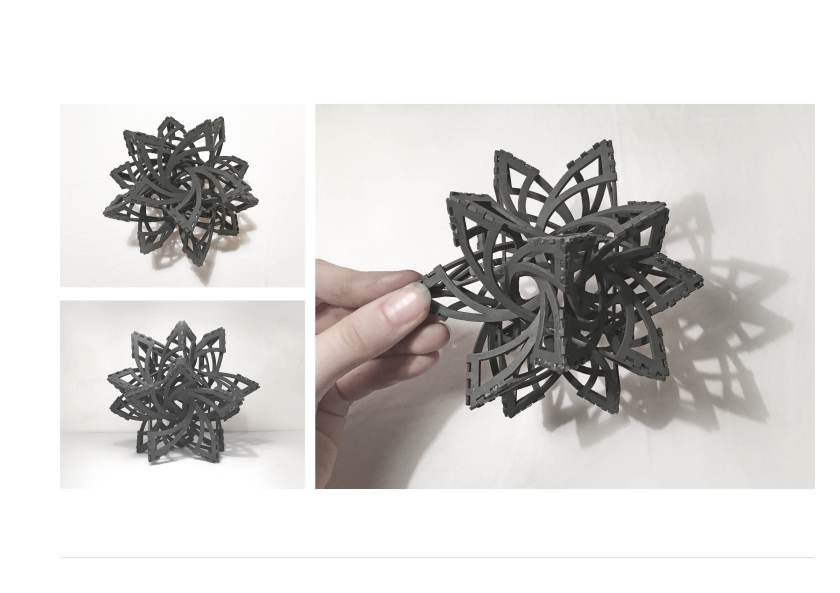
Following this research, I extracted the concept of avoiding the intersection and subdivided a cube with lines from each corner of the cube. These lines were then weaved around eachother using a sine curve with a domain of 0 to pi. I then mirrored the curves and rotated them to create an intertwining form.
Another test was created with the same process, however subdividing a cube using the midpoint of each face. – This creates an octahedral geometry.
Using this interweaving geometry, I have created different three dimensional arrays to create a spatial form. The concept of avoiding intersections naturally cause a structure to fail. To form a structurally efficient version of this geometry, I introduced the idea of a reciprocal structure, and allowed the beams to self support by resting on eachother. This did not create a structure strong enough to stand on, however through adding a cube whose dimensions are equal to the width of the beams, the structure became very strong.
Testing the component at a small scale required the design of a joint which allowed me to assemble these components together through interlocking elements. Each beam element slots into the joint; When two joints and two beams are connected together the curves naturally stay in place due to the angle cut into the joint. Three of these connected elements together form the component.
As mentioned previously, avoiding intersections create inefficient structures – For this small scale experimentation, the concept of Tensegrity was implemented. Tensegrity is a structural principle based on using isolated compression components within a net of continuous tension, allowing the compression members to not need to touch each other. This model was constructed using 1.5mm plywood which has been laser cut; the modularity of the system ensures minimal material wastage.
The three dimensional array of this geometry creates many interesting shapes and patterns when viewed from different angles – this is visible in the following video:











